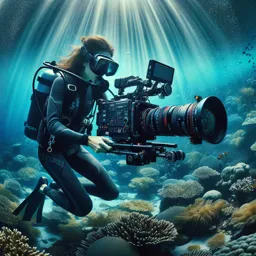Unlocking the Artistic Potential of Drones in Filmmaking
Drones have transformed the world of filmmaking by providing access to breathtaking, previously impossible perspectives. But their potential goes far beyond simply soaring above landscapes or cityscapes. For filmmakers seeking to push creative boundaries, drones offer exciting opportunities to rethink storytelling and visual composition.
Breaking Free from Conventional Angles
With traditional cameras, setting up dynamic movements or overhead shots often requires expensive gear, complex rigs, or even helicopters. Drones, however, make it possible to achieve remarkable shots with relative ease. Whether gliding through narrow alleyways, circling around action, or dropping dramatically from the sky, the ability to break away from static camera work sets a new standard for visual storytelling.
Pre-Visualization and Storyboarding with Drones
Creative drone work starts with solid planning. Before shooting, filmmakers often use drone footage for pre-visualization, capturing test shots that bring storyboards to life. This not only helps refine the director’s vision but also ensures smooth coordination on set, especially when working on complex sequences that combine drone and ground footage.
Combining Drone Shots with Ground-Level Action
The impact of drone shots is amplified when they seamlessly blend with ground-level cinematography. This integration can create a sense of movement and continuity, allowing viewers to experience scenes from new perspectives. For example, starting a scene at ground level and transitioning to an aerial view can expand the film’s emotional or narrative scope.
Key Considerations for Effective Drone Filmmaking
- Location Scouting: Identify locations where drone flights are both visually interesting and legally permissible.
- Lighting and Timing: Plan shoots during the “golden hour” or “blue hour” for dramatic natural lighting.
- Movement and Speed: Experiment with slow, controlled movements for cinematic effect, or faster fly-bys for dynamic action.
- Safety and Regulations: Always follow local regulations, maintain line of sight, and prioritize safety for crew and bystanders.
Enhancing Post-Production with Drone Footage
In the editing suite, drone footage offers a powerful tool for pacing, transition, and mood-setting. Color grading can enhance the aerial drama, while sound design—such as wind, music, or ambient sounds—completes the immersive experience. Creative editing can also help match drone footage with different cameras, ensuring a cohesive look and feel.
Conclusion
Drone filmmaking is about much more than capturing sweeping vistas. It is an evolving art form that rewards creativity, planning, and technical skill. Whether you’re an aspiring filmmaker or an experienced professional, embracing the creative perspectives that drones provide can open up new dimensions in your storytelling journey.





















